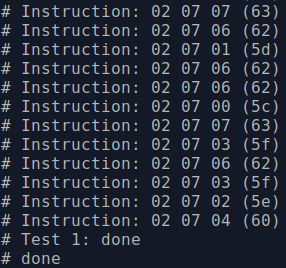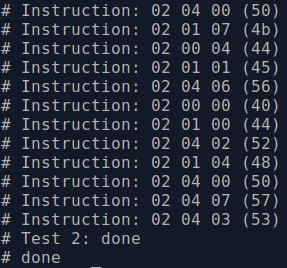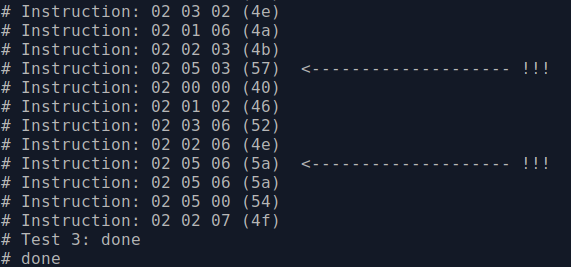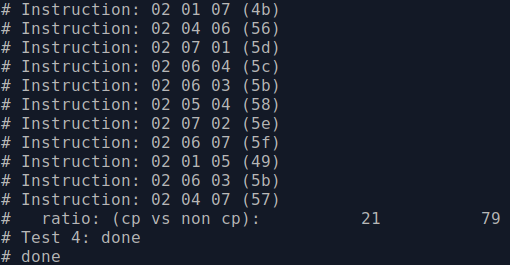Assignment 3
The third assignment focuses on the Transaction-class, but effects most components on the functional layer. As a reminder, objects of the transaction class are generated in the generator and are sent to the Driver and the Checker. The class must have the class members as stated below. The new and ToString methods should remain unmodified.
class transaction;
rand bit [1:0] instruction_type;
rand bit [2:0] instruction_selection;
rand bit [2:0] operand_selection;
function new();
this.instruction_type = 2'h0;
this.instruction_selection = 3'h0;
this.operand_selection = 3'h0;
endfunction : new
function string toString();
return $sformatf("Instruction: %02x %02x %02x (%02x) ", this.instruction_type, this.instruction_selection, this.operand_selection, this.toByte);
endfunction : toString
function byte toByte();
return byte'(this.instruction_type * 2**(6-1) + this.instruction_selection * 2**(3-1) + this.operand_selection);
endfunction : toByte;
endclass : transaction
program assignment3();
transaction tra;
initial
begin
/* COMPLETE THIS CODE */
end
endprogram : assignment3
For this assignment the program assignment3 should generate:
- Test 1: 100 tests random operands for each operation (ADD, ADC, SUB, SBC, AND, XOR, OR, CP) specifically (totalling on 800 tests)
- Test 2: 100 tests with random operands for operations that start with an A (ADD, ADC or AND)
- Test 3: 100 tests with random operands and random operations. After a SUB operation, the next operation MUST be XOR
- Test 4: 1’000 tests with random operands. Roughly 20% of the tests should be the CP operation. Print a summary of these tests to show the constrained is met.
Note that:
- a random operand implies: one of the 8 registers
- you can ADD everything you want to the transaction class
- below are some example screenshots of the expected results of the 4 tests



